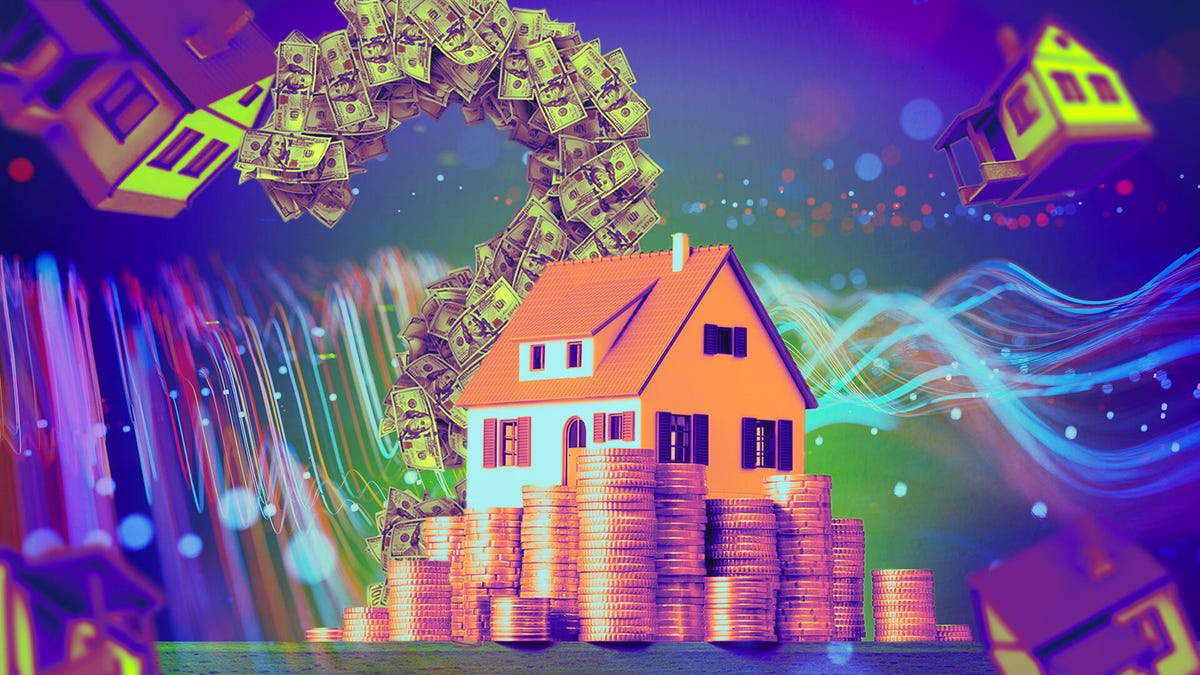
div>
Understand your risk tolerance
The safest approach when purchasing a home is to borrow less than you qualify for.
Many realtors recommend the 28/36 rule, a solid target for long-term financial stability. That means keeping your housing costs under 28% of your gross income and your total monthly debt under 36% of your gross income.
With $8,333 per month in gross income, that would cap your total monthly payment at $2,333.
More cautious buyers often follow the rule recommended by the personal finance author Dave Ramsey. Ramsey recommends keeping your mortgage at less than 25% of your take-home pay (not your gross income).
Looking at your net salary of $6,561 per month, that would cap your total monthly payment at $1,640 — a tough number to hit unless mortgage rates are low, you have a large down payment or are buying in a low-cost market.
Conventional mortgages vs. FHA loans
Most first-time buyers use either a conventional loan or a Federal Housing Administration loan. The right option depends on your credit score, savings and long-term goals.
Conventional loans are best if you have good credit (typically 680 or higher) and can put down at least 5 to 20% upfront toward the home’s purchase price. With a 20% down payment, you skip mortgage insurance and may qualify for a lower interest rate.
FHA loans let you qualify for a mortgage and buy a home with as little as 3.5% down and with a credit score as low as 580. These government-backed loans often have more favorable average interest rates than conventional loans but you’ll have more fees to pay. FHA mortgages allow higher debt-to-income ratios, which makes them more flexible if you’re pushing your budget. The trade-off with an FHA loan is being stuck with mortgage insurance premiums unless you refinance later.
Both loan types are common if you’re starting your homeownership journey. It just depends on your personal situation and how much you can realistically afford to pay off in monthly mortgage debt. With a smaller down payment, you’ll be taking out a larger loan with more debt to pay off over the long term.
Decide how much down payment you can afford
Your down payment percentage has a direct impact on your loan, monthly payment and whether you’ll need mortgage insurance. Let’s take a more detailed look at what this would mean for a $400,000 home, which is less than the average home sales price în SUA.
Down payment on a $400,000 home:
- FHA loan: 3.5% = $14,000 down payment
- Conventional loan minimum: 5% = $20,000 down payment
- Conventional without mortgage insurance: 20% = $80,000 down payment
A 20% down payment means lower monthly payments, no mortgage insurance and less debt and interest paid over time. It also increases your odds of getting your offer accepted in a competitive market. But if putting 20% down drains your savings, that’s not the best move either. You still need reserves for closing costs, maintenance and emergencies.
Determine your debt-to-income ratio
Debt-to-income ratio, or DTI, is how lenders measure your ability to repay a loan. It’s a simple formula: monthly debt payments divided by gross monthly income.
Two numbers matter. The front-end ratio is the percentage of your income that goes toward housing expenses only (mortgage payment, property taxes, insurance, etc.). The back-end ratio is the percentage that includes all monthly debts (from housing, credit cards, student loans, car payments, etc.).
Most conventional loans allow up to 49.99% on the back-end ratio, although many lenders aim lower. FHA loans are more flexible, with lenders often allowing DTIs above 50% if your credit and income support it.
Keep in mind that these are maximum limits. Just because you can borrow that much doesn’t mean you should. A lower DTI gives you more breathing room in your monthly budget and can make life feel a lot less stressful after you move in.
Buying a home with a $65K salary
Purchasing a home with a lower salary is definitely riskier and harder for most people. Your options will be limited by loan size and monthly debt caps. In most cases, you’ll need a large down payment, a second income or family support to make it work.
In more affordable regions, you can still buy modest homes or condos with help from FHA loans or grant programs. But in places like California or New York, homeownership options will be very restricted without assistance.
[conținut încorporat]
Preparing for the housing market today
În timp ce home prices may cool in some areas, a major drop is unlikely. Waiting for a price crash could mean missing out on the right home.
Housing inventory is still below pre-pandemic levels, with current homeowners holding tight to their cheaper mortgage rates. Demand for homes remains strong, maintaining the supply/demand imbalance and keeping prices elevated.
Before you start home shopping, speak with a mortgage loan adviser. They’ll help you understand exactly how much home you can afford based on your income, credit and debt. They’ll also break down your full payment so there are no surprises.
Taking out a mortgage is one of the biggest commitments you’ll make. Getting the numbers right, especially in a high-priced market and an unpredictable economy, helps you prepare for the costs of homeownership and avoid regret.
[conținut încorporat]


